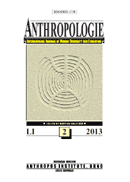|
|
| |
|
|
| |
Full text of article
'Bartoli F, Tartareli G, Manolis SK, Mallegni F, Sampson A, 2001: Dietary Reconstruction of the Early Bronze Age Manika Population (Euboea island, Greece). Anthropologie (Brno) 39, 2-3: 117-124'. |
| |
| Abstract | | The Early Bronze Age (EBA) period in Greece is represented by the Manika and Aghios Kosmas cemeteries and some other sites with a few skeletal remains. Thus, the EBA Manika is a very important urban site, and though the skeletal material is not in a good state of preservation, a palaeodemographic analysis was carried out with important results (Neroutsos et al. 1994a, b). Next step of the study was the bone trace-element analysis for elucidation of the dietary habits of this early urban Hellenic city. This kind of analysis indicates a well-balanced food intake with the same contribution of vegetable and meat consumption. The analysis of the dental pathology showed a very low incidence of carious lesions and ante-mortem tooth loss, as well as a significant degree of tooth wear and a moderate incidence of DEH (indicative of a good teeth mineralization and a good status of general health). These data are in accordance with the results of the trace mineral analysis with regard to the kind of diet (well balanced) of this population supported by a mixed economy. | | | | Keywords | | Dietary reconstruction - Bone trace-element analysis - Strontium - Zinc - Dental pathology - Bronze Age - Greece | | |
|
|
|

 Full text (PDF)
Full text (PDF) Export citation
Export citation Related articles
Related articles